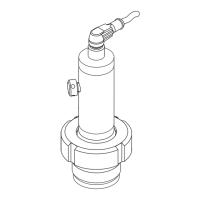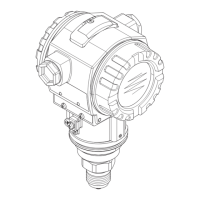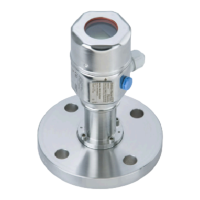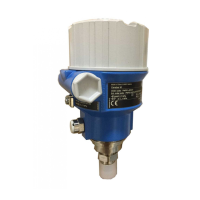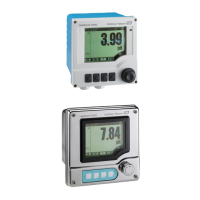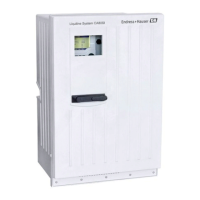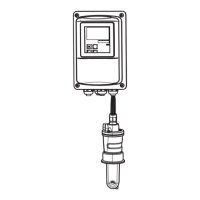Cubemass DCI MODBUS RS485 Commissioning
Endress+Hauser 61
Performing a zero point adjustment
1. Operate the system until operating conditions have settled.
2. Stop the flow (v = 0 m/s).
3. Check the shutoff valves for leaks.
4. Check that operating pressure is correct.
5. Using the local display, select the ZEROPOINT ADJUSTMENT function in the function matrix:
BASIC FUNCTIONS → PROCESSPARAMETER → ADJUSTMENT → ZERO POINT
ADJUSTMENT
6. When you press O or S you are automatically prompted to enter the access code if the
function matrix is still disabled. Enter the code (factory setting = 84).
7. Use O or S to select START and confirm with F.
Select YES at the prompt and press F again to confirm.
Zero point adjustment now starts.
– The message "ZEROPOINT ADJUST RUNNING" appears on the display for 30 to 60 seconds
while adjustment is in progress.
– If the flow in the pipe exceeds 0.1 m/s, the following error message appears on the display:
"ZERO ADJUST NOT POSSIBLE".
– When the zero point adjustment completes, the "ZERO ADJUST." function reappears on the
display.
8. Back to the HOME position:
– Press and hold down Esc key (X) for longer than three seconds or
– Repeatedly press and release the Esc key (X).
6.5.2 Density adjustment
It is always advisable to perform density adjustment when optimum measuring accuracy is required
for calculating density-dependent values. 1-point or 2-point density adjustment is required
depending on application conditions:
1-point density adjustment (with one fluid):
This type of density adjustment is necessary under the following conditions:
• The sensor does not exactly measure the density value which the operator expects based on
laboratory trials.
• The fluid properties are outside the measuring points set at the factory, or the reference conditions
used to calibrate the measuring device.
• The plant is used solely for measuring a fluid whose density is to be determined very accurately
under constant conditions.
Example: Brix density measurement for apple juice
2-point density adjustment (with two fluids):
This type of adjustment is always to be carried out if the measuring tubes have been mechanically
altered by material buildup, abrasion or corrosion for example. In such cases, the resonance
frequency of the measuring tubes has been affected by these factors and is no longer compatible with
the calibration data determined at the factory. The 2-point density adjustment takes these
mechanical changes into account and calculates new, adjusted calibration data.
Performing 1-point or 2-point density adjustment
"
Caution!
• Onsite density adjustment can be performed only if the user has detailed knowledge of the fluid
density, obtained, for example, from detailed laboratory analyses.
• The target density value specified in this way must not deviate from the measured fluid density
by more than ±10%.
• An error when entering the target density affects all calculated density and volume functions.
• 2-point density adjustment is only possible if the two target density values differ by at least
0.2 kg/l. Otherwise error message #731 (adjustment not possible) appears on the display.

